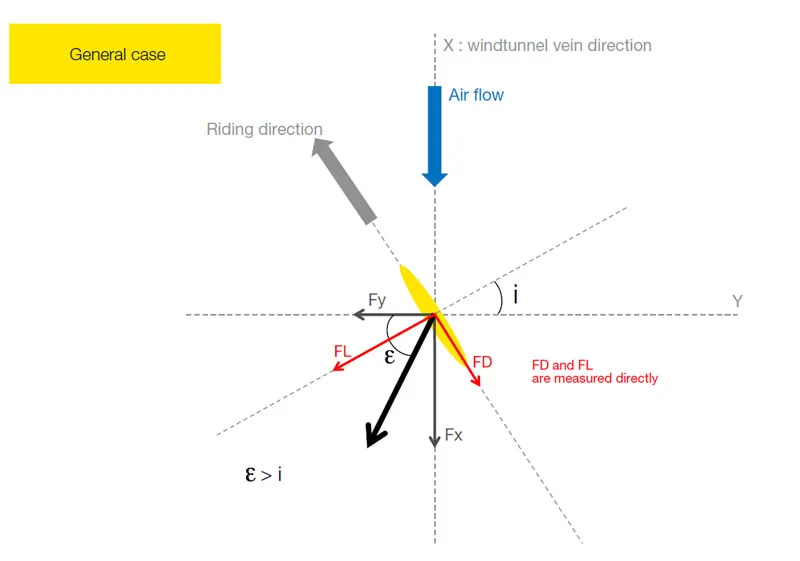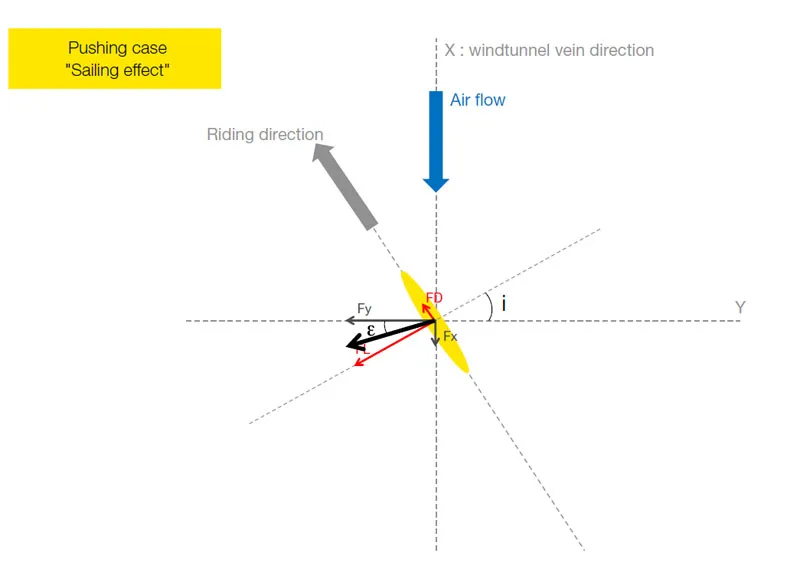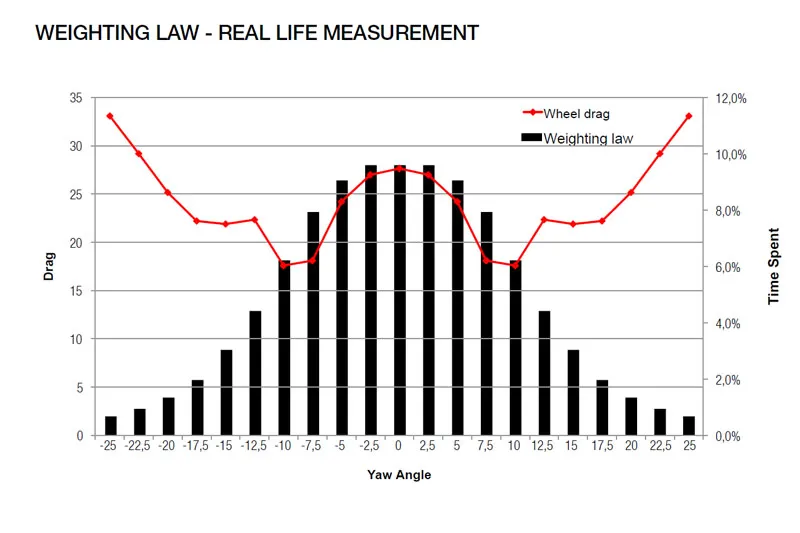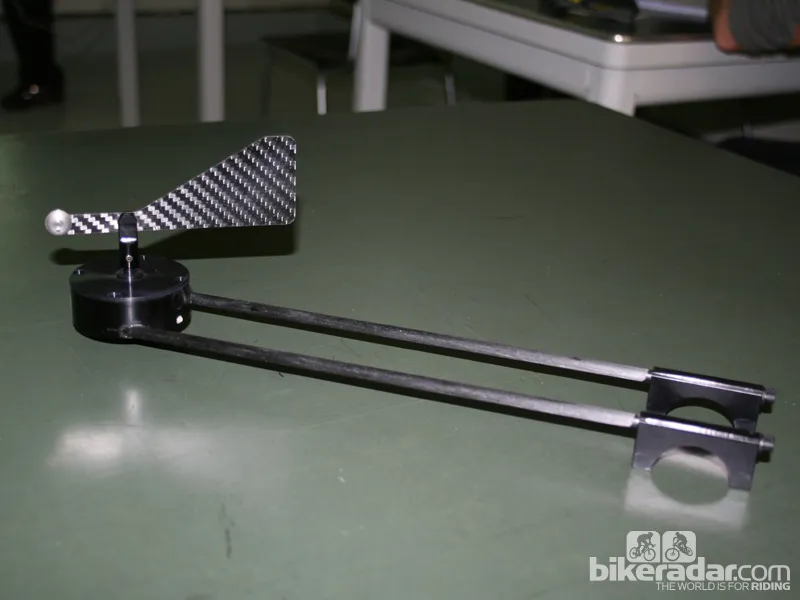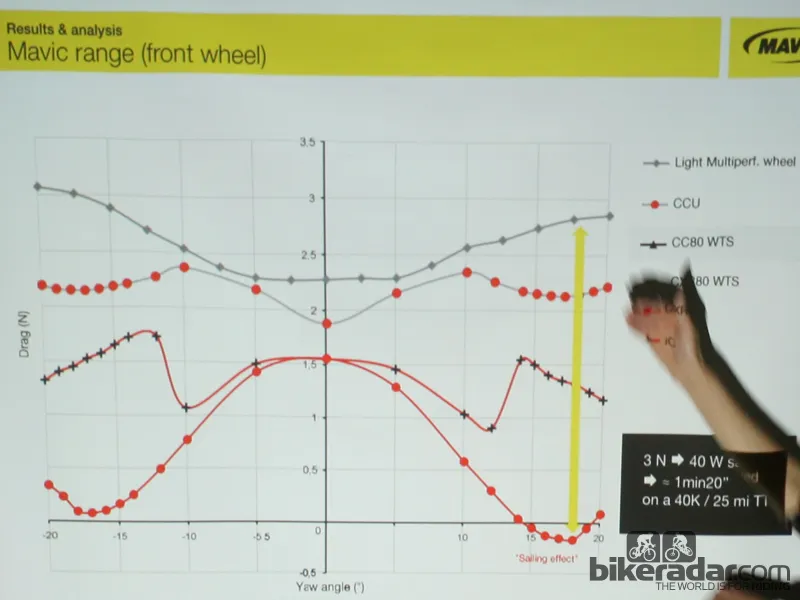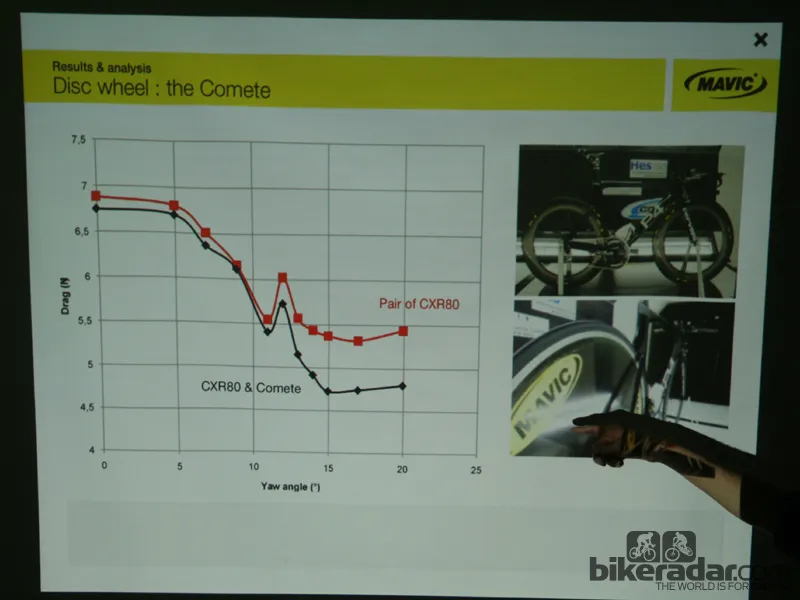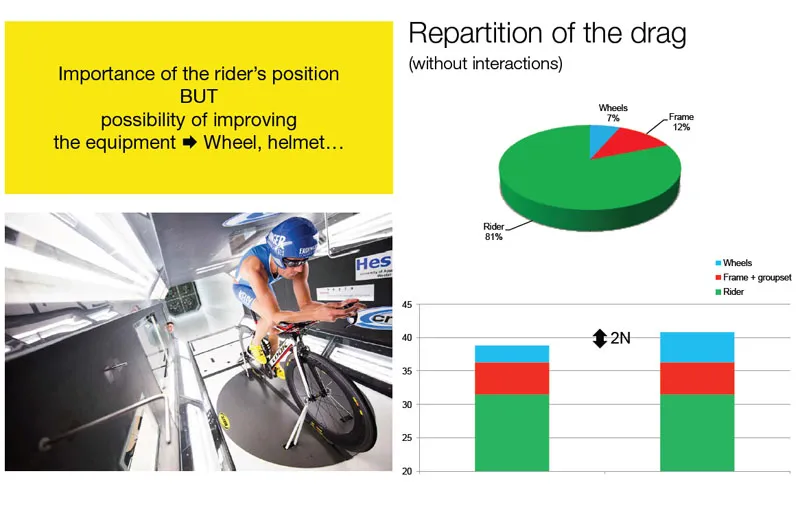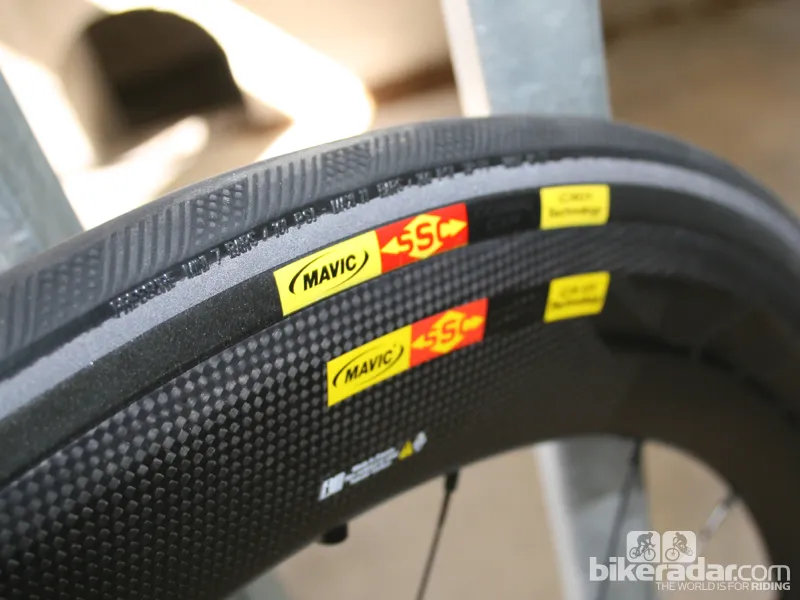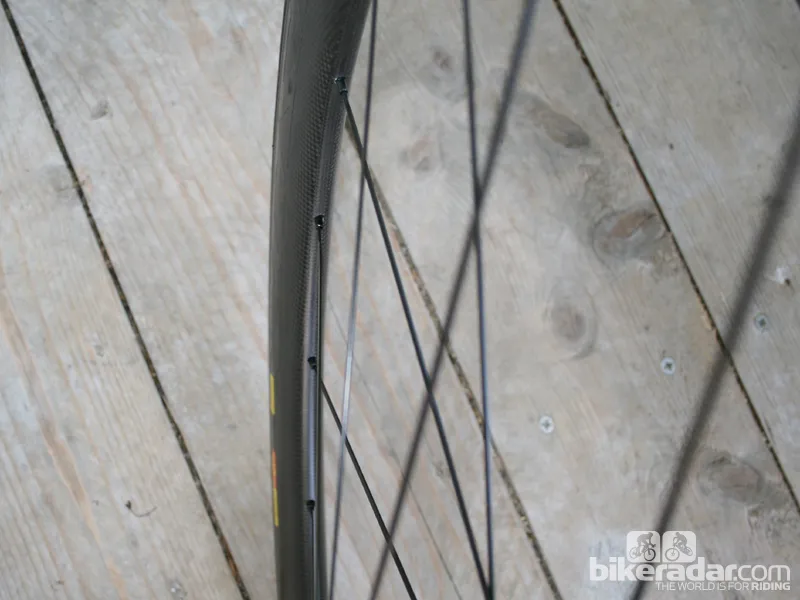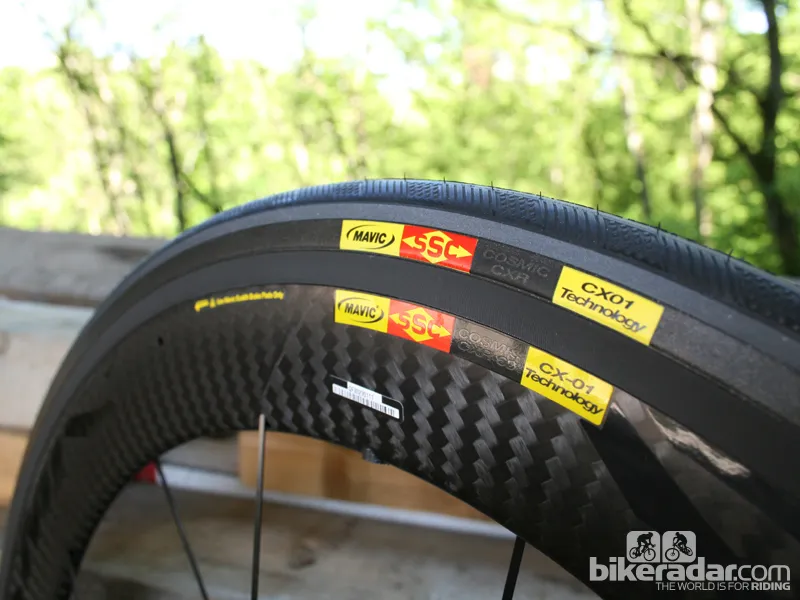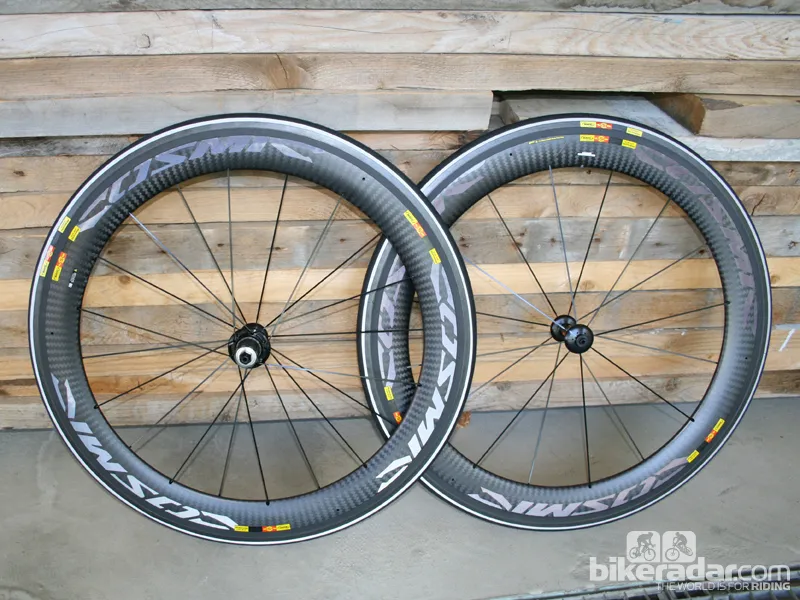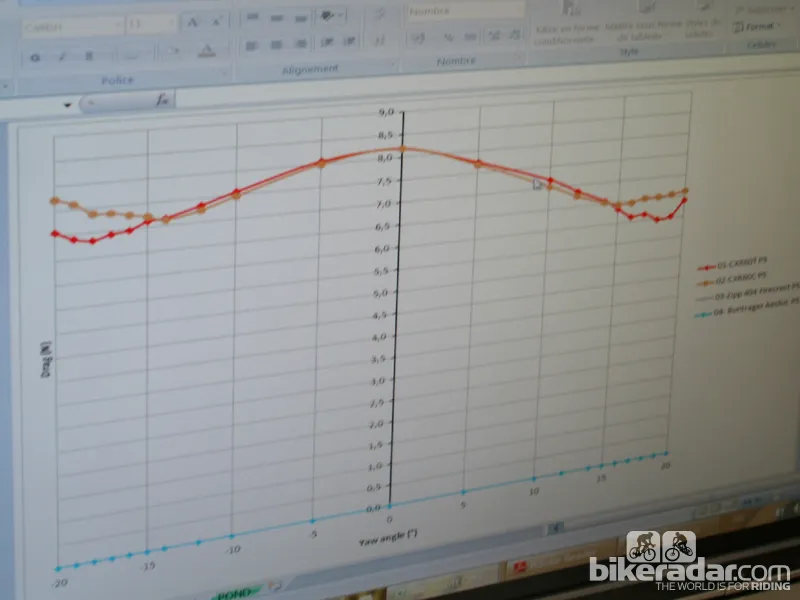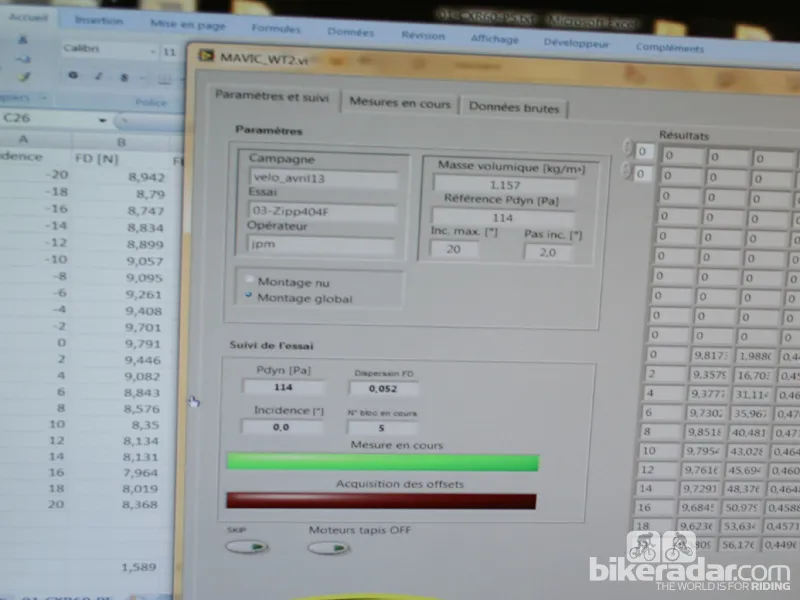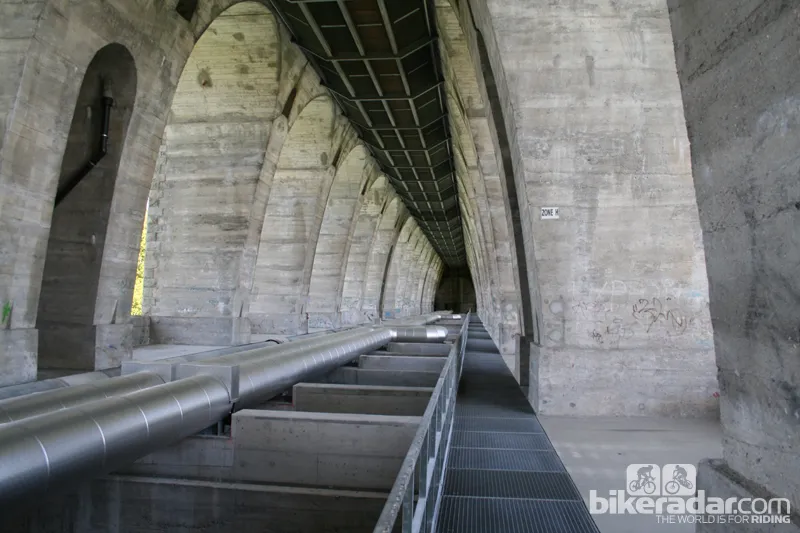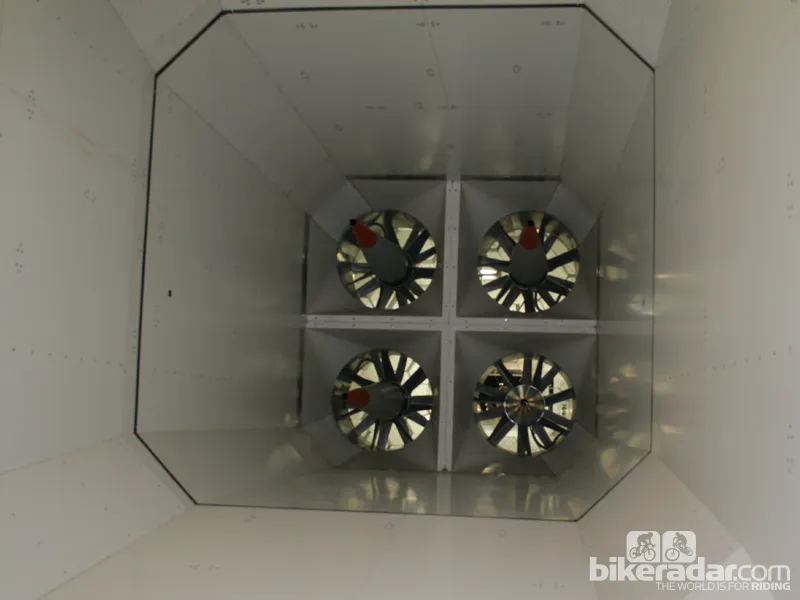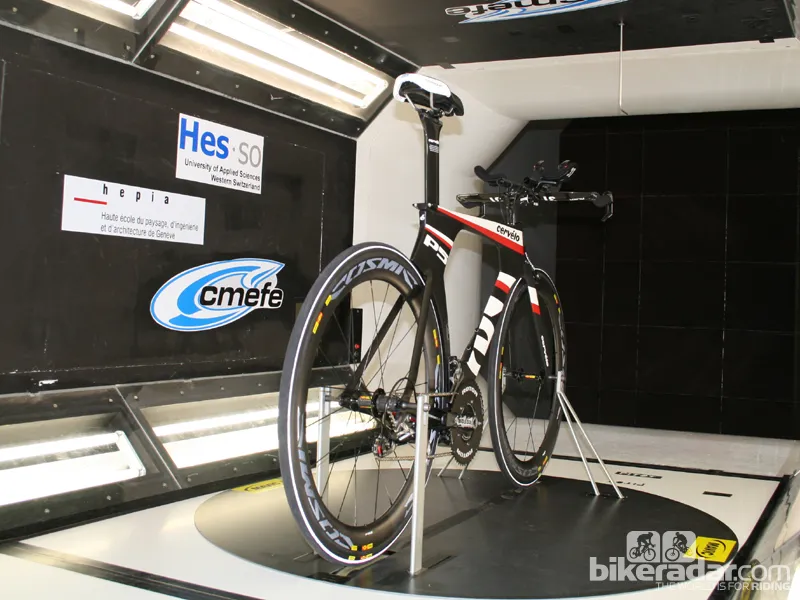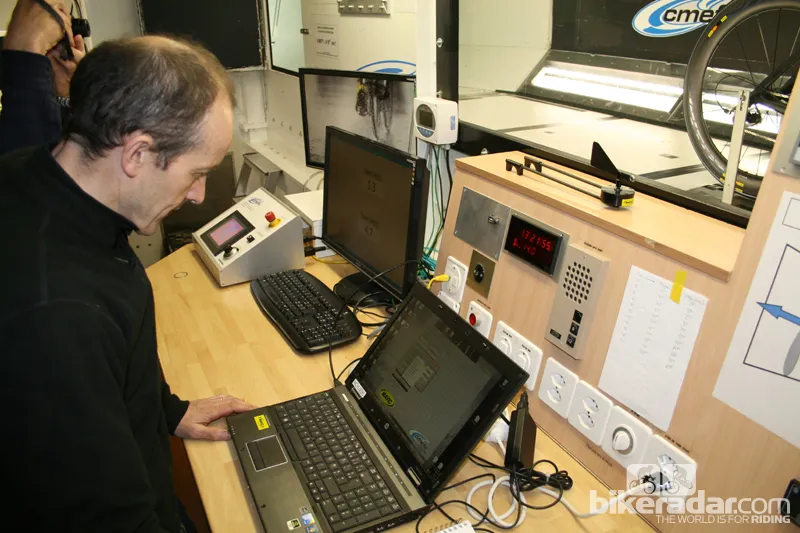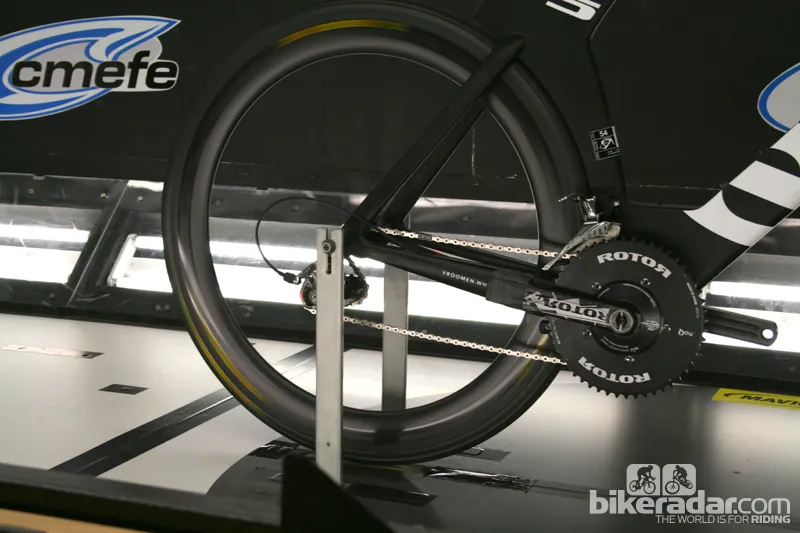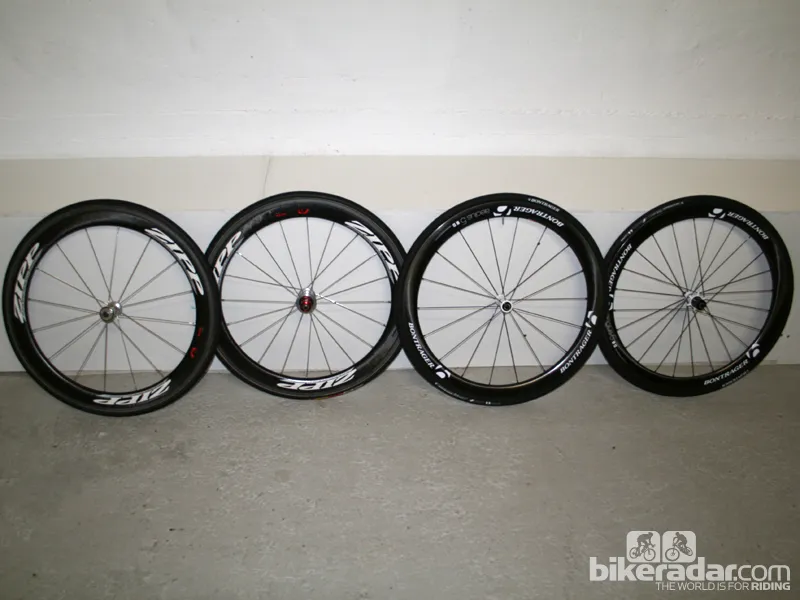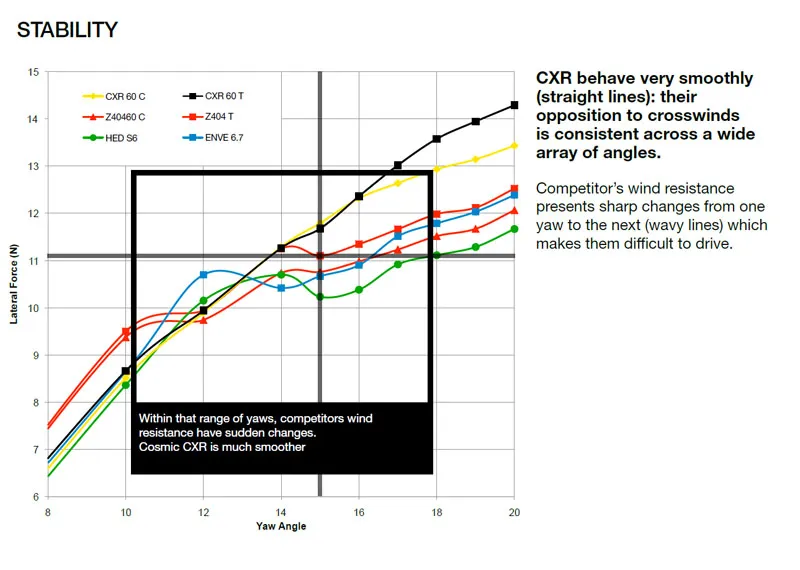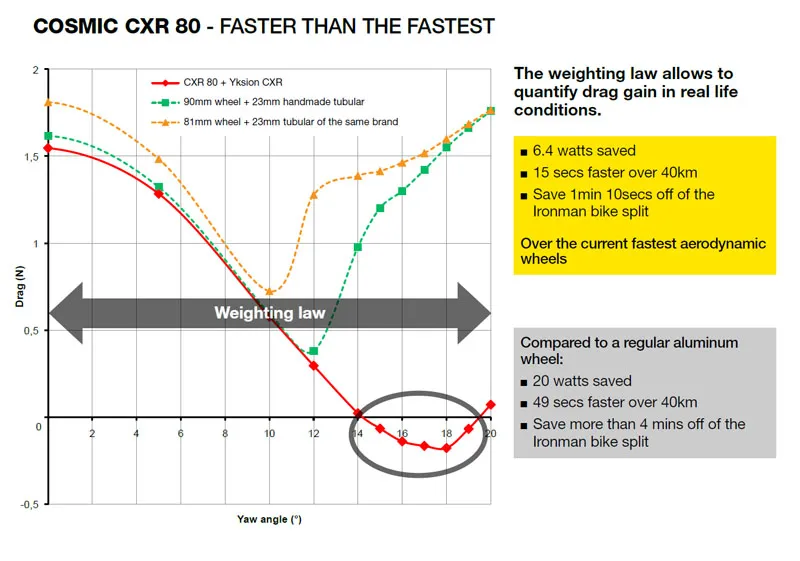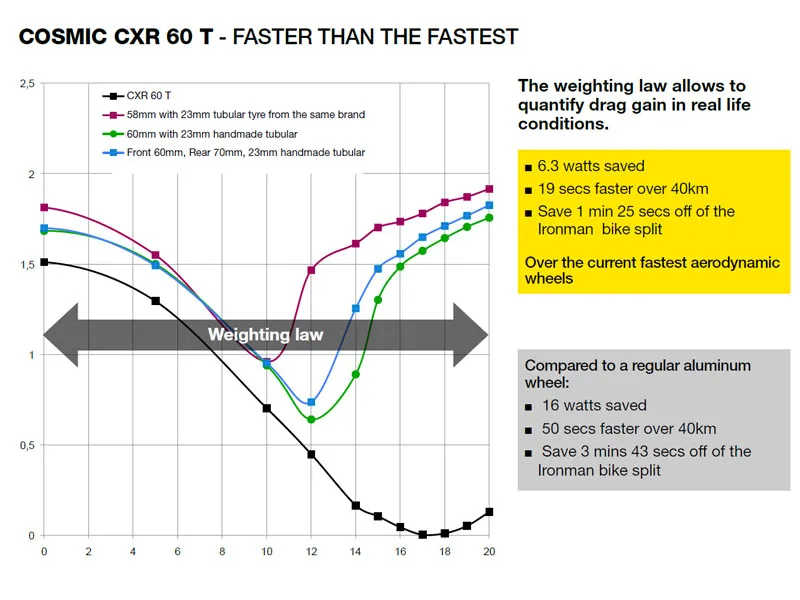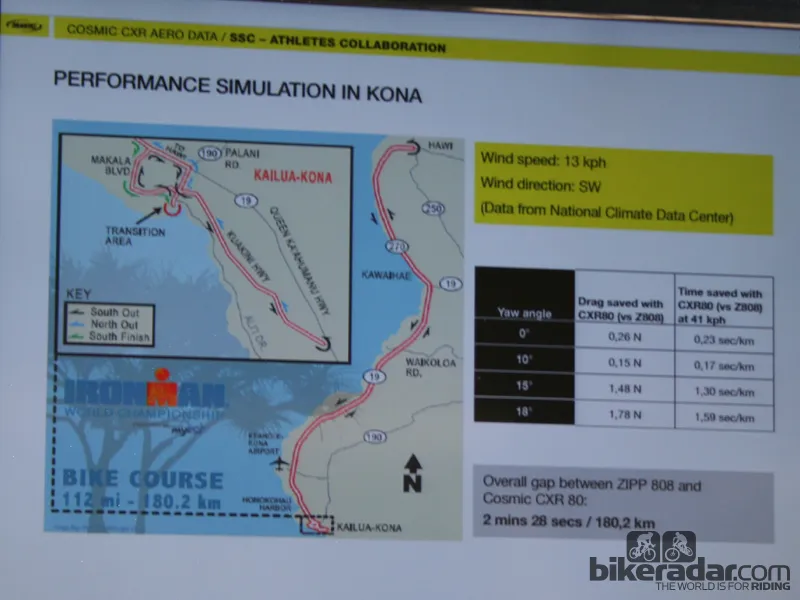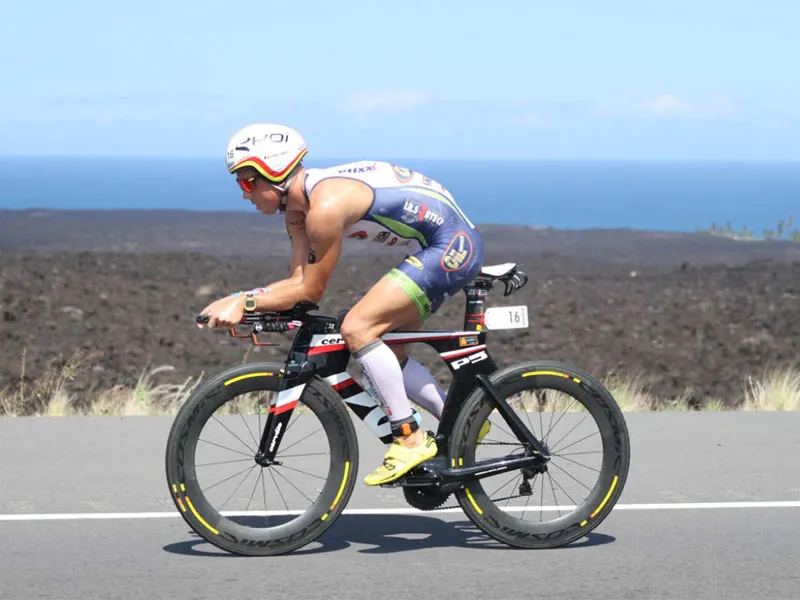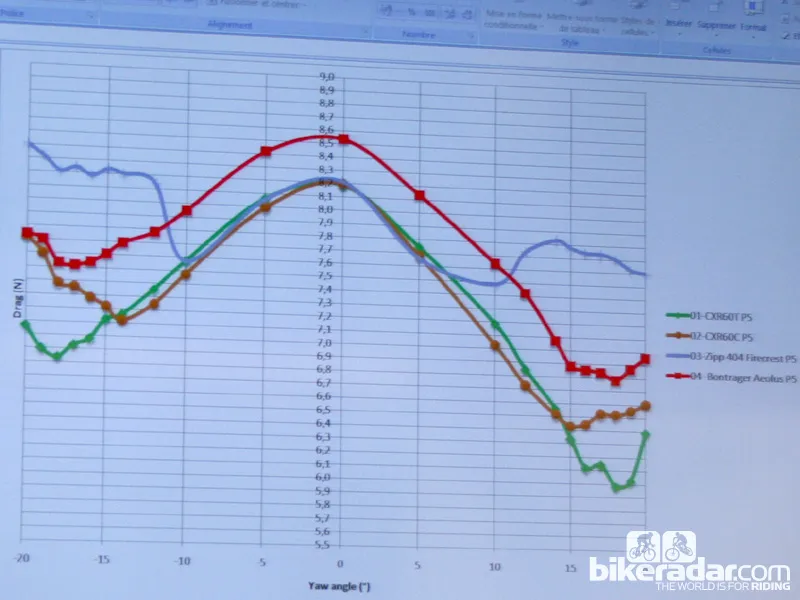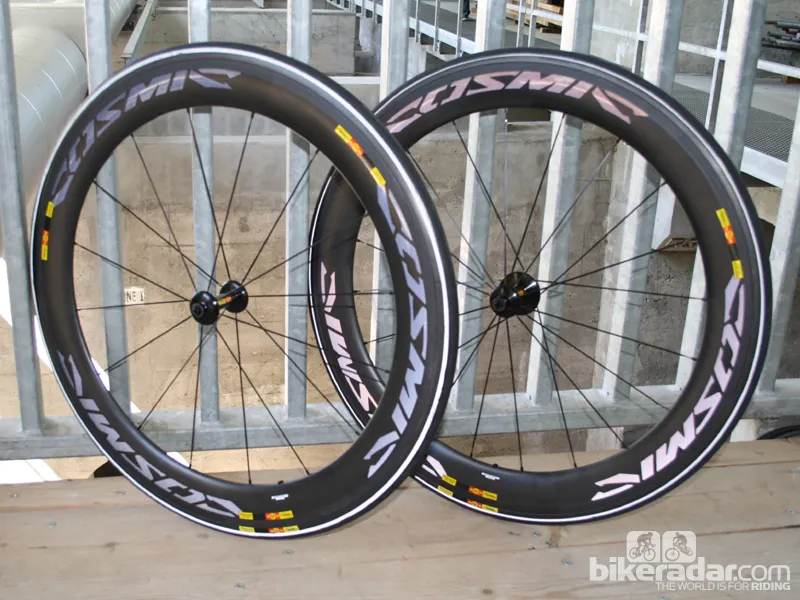Mavic claim their new Cosmic Carbone CXR 60 wheels can beat out aero titans such as the Zipp 404 in the wind tunnel at certain yaw angles. The CXR 60 follows on from the design of Mavic’s first aero wheel, the CXR 80, which was introduced last year as part of a wheel-tyre system.
As with the CXR 80s, the 60mm-tall CXR 60 wheels feature snap-in 'blades' that smooth the transition between the tyre and wheel. The blades' function is purely aerodynamic. However, while the 80s are tubular only, the 60s come in clincher and tubular options.
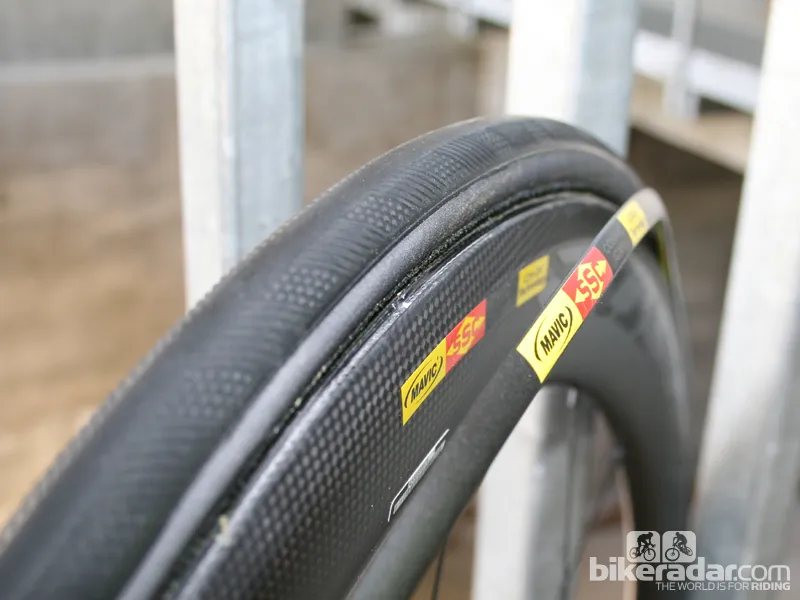
Mavic's blades carry over from the CXR 80 to the 60
The £1800/€2,000/US$TBC CXR 60 clincher set will include the wheels, Mavic tyres, blades, skewers and bags. Claimed weight is 1,800g, with another 195g for the tyres. The £2000/€2,200/US$TBC CXR 60 tubulars have a claimed weight of 1,600g for the pair, and the tyres are 240g a piece.
The first wheels are expected to begin shipping in July, with full availability by September 2013.
Mavic’s wind tunnel
Mavic do their aerodynamics testing in the CMEFE hepia wind tunnel in Geneva, Switzerland. The University of Geneva operates the tunnel for a variety of tests, from optimising the French downhill skiing team to modelling pollution fallout across cities.
Mavic are the only cycling company with access, though, and provide their own engineers, aerodynamicists and even a force measuring balance to keep costs down. As a result, they were able to spend 18 days in the tunnel in 2011, and 28 in 2012 – around 1,000 hours in total – to develop and test their wheels.
Mavic also used a bicycle mounted weather vane to measure and record wind direction during any given ride. The wind direction changes a lot and Mavic wanted to get an idea of the distribution of yaw angles. They gathered plenty of data and came up with a weighting law to clump the aero savings at various yaw angles into a single number that's easier to understand, and hopefully realistic.
We have a feeling we'll be seeing a lot more from Mavic in the future, as they've quickly closed the gap to their competition thanks to the convenience of having a wind tunnel almost on their doorstep.
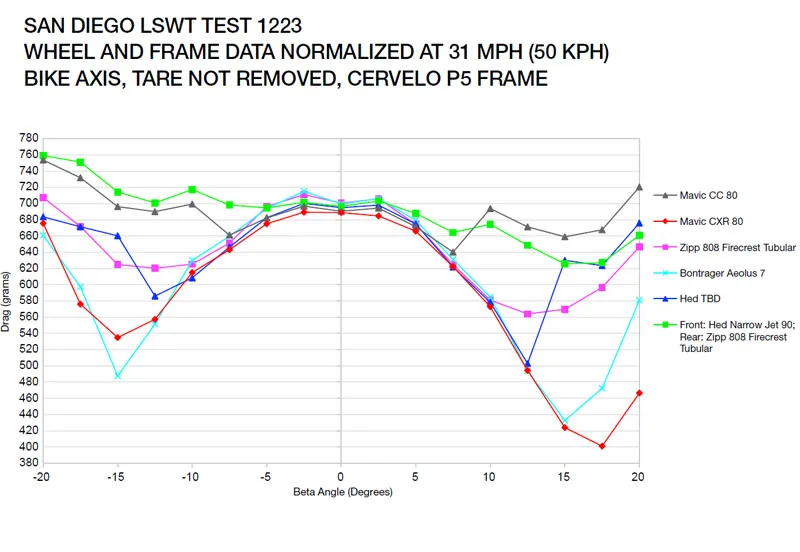
Mavic claim the CXR 60 is better than the competition – especially at high yaw angles
Top-line figures and judgements
While Mavic claim the CXR 80s outperform every wheel they've tested, the CXR 60 clinchers and tubulars are close to each other.
Like many manufacturers, Mavic measured the drag of the wheel at a variety of yaw angles. Interestingly, the CXR 60 C (clincher) is better than the CXR 60 T (tubular) from 0 yaw (head-on wind) to about 10 degrees. This is due to the slightly different tyre and rim shapes of the clincher and tubular.
When considering a weighted average of yaw angles based on what a rider will typically experience, all three wheels were within 1.5 watts of each other. Mavic found that the Zipp 404 Firecrest wheel did a bit better than the CXR 60 at 5 degrees, but not at 0 or at 10 degrees.
At a glance, we think the CXR 60 C seems like a good bet over the CXR 60 T because:
- The metal Exalith braking is better than the carbon surface on the tubulars
- They are cheaper by €200
- The tyres have better rolling resistance by 3-4w with a standard butyl (not lightweight latex) tube. Rolling resistance savings could be even greater with the latter
- They are about the same weight as tubulars when you include the tyres
- They have slightly better aerodynamics between 0 and 10 degrees
- No glue is required!
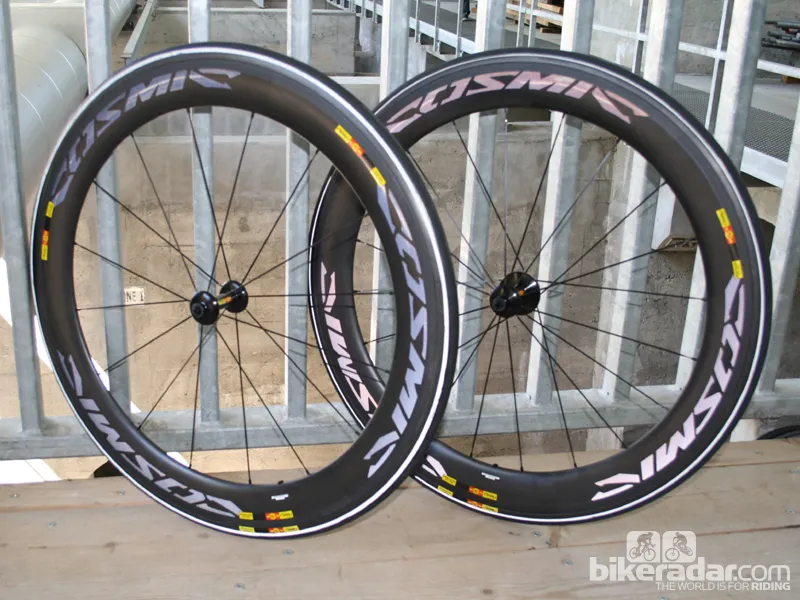
The new Mavic Cosmic Carbone CXR 60
A pro triathlete’s perspective
Mavic had Ironman World Championship bronze medalist Frederik Van Lierde on hand for the wheel launch, to talk about his experience on the CXR 80s, which he rode at Kona last year to his best ever bike split (4:35) and position (third) on a windy day.
“Last year, in September, I was here [in the Geneva wind tunnel] to do some testing with Mavic,” Van Lierde said. “I tested a couple of things, including position. One thing convinced me when I did the setup with only one wheel, the CXR 80, at a certain yaw angle into a headwind: the wheel kept spinning. That was good technically and mentally.”
Van Lierde chose to ride the CXR 80 front and back at Kona, which can be notoriously windy. “I could stay in the bars the whole time, something I didn't have with other wheels,” he said. “For a course like Hawaii these are great wheels for all those kind of windy conditions. Previously I was 10th to 15th in the bike; now I was fourth.”
Van Lierde said that, while he will always race a set of 80s, the CXR 60 is a great alternative for “people who are not sure about 80s”. Aside from the handling aspects of an 80mm wheel, there's also the fact that the 80s are tubular only.
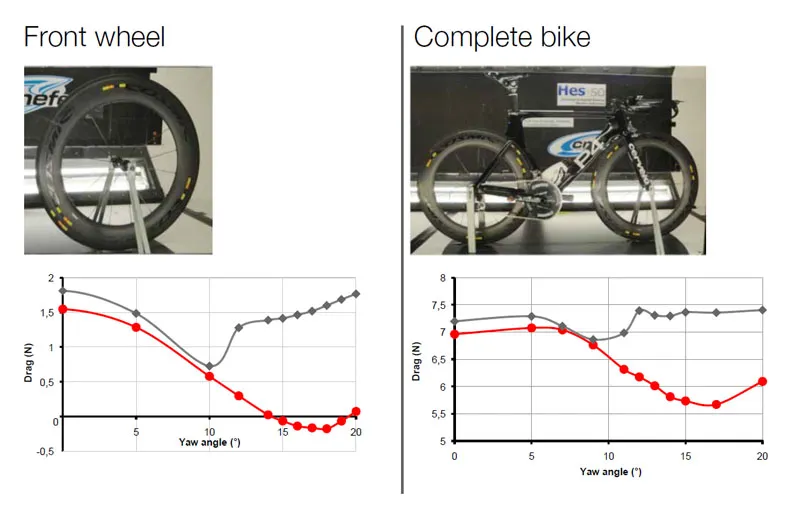
Yaw angle drag studies for the front wheel and a complete bike – patterns are similar
Numbers and claims
When considering resistive forces acting on the rider and bike, aerodynamics are quite important. While rolling resistance doesn't increase with speed, aerodynamic drag goes up with the square of speed. The power you need to overcome rolling resistance increases linearly with speed but goes up with speed cubed for aerodynamic drag.
For their comparisons, Mavic ramped up the speed to 50km/h. For reference, the fastest-ever stage of the Tour de France was won by Mario Cipollini at an average speed of 50.355km/h, and David Millar won the fastest-ever Tour time trial longer than 40km with an average speed of 54.361km/h over 49km.
Taking into account a weighted average of yaw angles, Mavic say their CXR 60s save 6.3 watts, or 19 seconds, over 40km when going 50km/h, compared on average to the Zipp 404s, the HED Stinger 6 and the Enve 6.7.
Tyres and NACA profiles
Mavic considered tyre and rim in developing their wheels, because the tyre is what sees the air first and affects the airflow.
The CXR 60 C and T use different sets of NACA airfoils. There are two profiles because each wheel hits the air twice, once in front (60 percent of drag) and once at the trailing edge (40 percent). The CXR 80 uses NACA profiles 0024 and 0011, the CXR 60 T uses 0029 and 0017, and the CXR 60 C uses 0027 and 0012.
The tyre tread pattern is also optimised for aerodynamics, to help keep flow laminar around the rim and tyre.
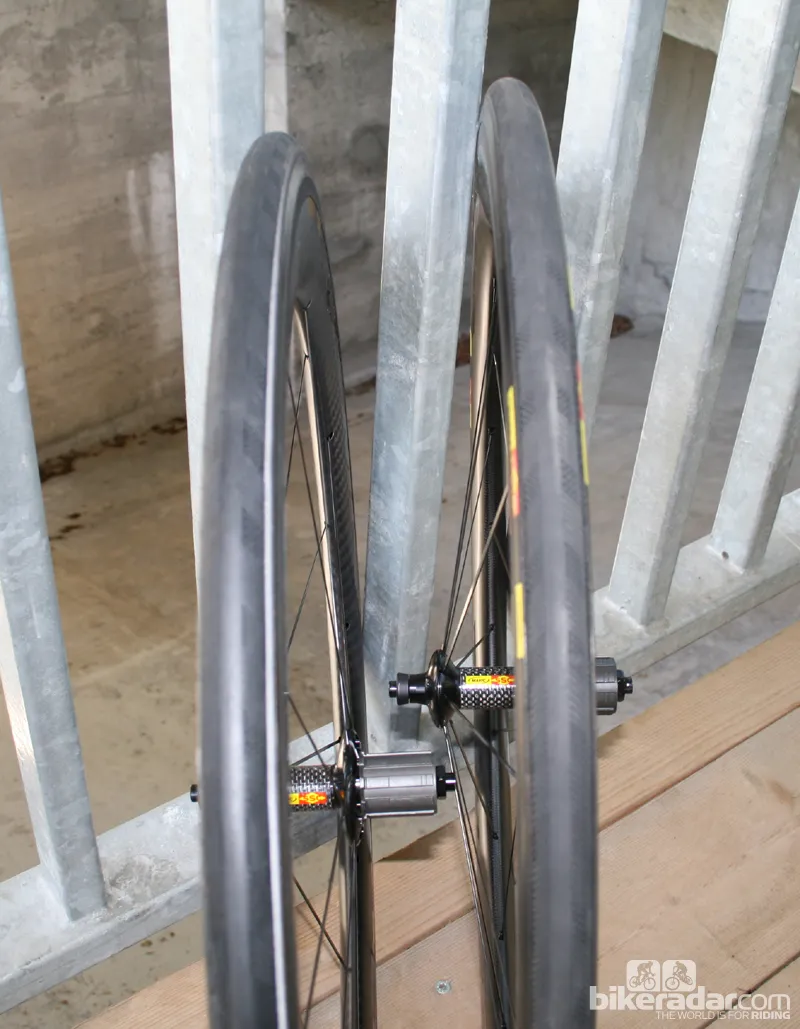
Subtle differences in tyre shape between the tubular and clincher CXR 60s
While the spokes and hubs are as slender as possible while maintaining high stiffness, Mavic have used their normal hubs, and haven't tried to optimise them for aerodynamics.
First ride review
BikeRadar are test riding the CXR 60s today, so will post a first ride review following that.
